As much as we love tools here at SSC, we find that many nonprofits focus too much on them when thinking about their technology strategy and infrastructure. While tools are an important and necessary piece, it’s important that an organization focus on the more crucial piece of the technological equation: the data. When thinking about organizational technology infrastructure, data, or “the stuff” that an organization puts into tools to make them relevant, should be the focal point. Where does it live? How does it interact with other tools? How can you use it? Let’s talk a bit about why it’s more important than tools.
Data are Your Organization’s Lifeblood
When someone says “data”, many people think of technical stuff like code, 1s and 0s, mathematical formulas and things that happen behind the scenes. Well I’m here to say Pish Posh. PISH. POSH.
Data, my friends, are the contents of the work that you do at your organization. Everything from the web pages that you create to the contacts you make at networking events to the conversations you have with your boss through email. If you dig deep enough, many of these things are, yes, code-y and technical at a deeper level, but as an organization you can think of these data as the information that informs, defines and fuels your work.
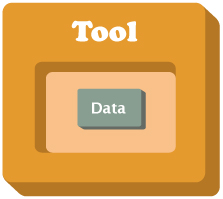
Data are the raw materials that tools (e.g. CRM, web site CMSes, Facebook, email clients) use to be effective. Think of your email client (e.g. Outlook, Thunderbird, etc.) without your emails or contacts. Pretty useless, eh? Or think of your web site without the page text, pictures and customizations you’ve made. It would just be an empty skeleton of a web site, right?
Data are the real organizational assets.
Your organization’s data are what makes it do what it does. Tools act as containers that hold that data. The containers can change but the data are what stays the same. As a result, we advocate for organizations to take a data-centric approach to their organizational technology rather than a tool-centric approach.
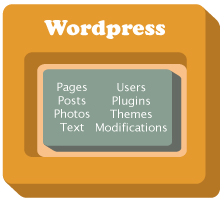
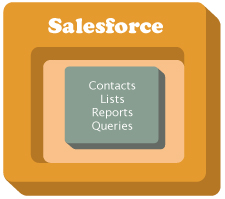
Have a Data-Centric Technology Policy NOT Tool-Centric
Remember that tools change, break and developers stop working on them all of the time, whereas the data that your organization uses will continue to exist and grow. By prioritizing your data rather than tools, you’ll be focusing on the stuff that really matters rather than the container (tool) it’s currently sitting in.
Many organization have budget line items for tools but few if any have budget line items for the amount of time, energy and money that goes into data creation and maintenance. Unfortunately, “data” can be an abstract and vague concept especially for budgets. But however vague it is, because it is the real asset, “nonprofits should center their technology strategy and resource allocation around the creation and curation of data, instead of fixating on the cost of applications and processors that edit and store that data.”
Think about Data When Choosing a New Tool
Ideally, all of this talk and stress about the importance of data is happening when you begin a relationship with a new tool (rather than figuring out what the situation is for an existing tool in your infrastructure). When looking at new tools to take on some type of function at your organization, here are a few things to consider as you prepare to send your data off into the big scary world:
- Plan for the day when you need to switch tools or the tool you’re using breaks
Can you get your data out (in other words, what are the “export” options)? How? What if Facebook accidentally deletes your page? What if your email blasting program breaks? Are you able to prepare for those eventualities by making a data backup?
What about if a tool choice you made turns out to be bad? How do you move your data from one tool to another?

- Make sure the backup of essential data is a well-defined process
If you are able to get your data out of the tool, do you know what you need to do to use it again in another tool? Is it using a universal filetype like .CSV or something that wouldn’t be intelligible even if you are able to get it out?
- Know the security and privacy implications for your data, your org AND more importantly your constituents
What does the tool’s Terms of Service say about its use of your data? Are the data secure, private, encryptable? Who else is allowed to look at your data? In what legal jurisdiction are your data being stored? As a nonprofit with constituents, you have an obligation to keep their data safe and secure.
- Find out ownership terms for you data
Are your data really yours? What do the Terms of Service say about ownership?
Open Source Tools are a Data-Centric Org’s Best Friend
Choosing tools that are good to you and your data can be tricky. You have to do your due diligence in making sure the container (the tool) for your data is going to treat it all right and let you have all the access you need. While you need to evaluate what your different tools are doing with your data no matter what, Open Source tools generally put you on much, MUCH more steady of a foundation.
- Open means transparent
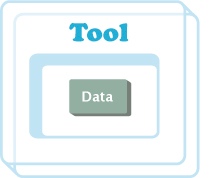
The nature of open source technology is that anyone can see how it works. This means that every aspect of an open source tool is out in the open for the entire world to see.
No backdoors installed for the government to snoop and no software developers coding secret pieces to gather data on your use.
- Not tied to one person
Because anyone can dig around in an open source tool and learn how it works, there are many open source tools with very large communities of developers and users who are super familiar with it and can help you out. This, in contrast to a custom-built tool that may do exactly what you want but if the relationship with the developer goes sour, you’re trapped with its functionality, price hikes for services and schedule because no one else knows the tool but the person who made it.
- No profit motive
When you buy a proprietary tool like Adobe Creative Suite or Microsoft Office, those companies are making money. They’re in the business of selling software. Money is their bottom line and motivation. With open source tools, on the other hand, because anyone can see how the tools work, most of the developers aren’t are out to make money, they’re more about supporting users with functions that they need to get real work done.
All of these factors (and many others) lend more transparency how tools are manipulating your data and give you more freedom in terms of how you can get it out. We strongly recommend whenever possible, especially as a nonprofit to choose open source tools.
How Can Our Organization Get On Top of Our Data Management?
Ok, so now we’re all freaked out about tools throwing our data around.
What do we do about it?
- Put together a “data inventory”
Open a spreadsheet and start listing all of the places that your organization has data. Think of communications tools, project management tools, online real estate, white boards, photo albums… Have the spreadsheet account for the following:
- Where are all the places your organization has data living?
- What data are stored there?
- Who has access?
- Is it backed up?
- How is it backed up?
- How often is it backed up?
- Back up your data!
- Make sure that with each new tool adoption, you have a sense of how to get your data out of the tool
Need a template? Here is deeper look into Creating an Online Accounts Inventory.
Data Trumps Tools Every Time
In a nutshell, try to prioritize data as the true technology assets at your organization. That way you’ll be able to manage tool shakeups, breakages and switches that are inevitable while protecting the real information that your organization needs to keep saving the world.
How do you prioritize data at your organization?
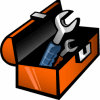







Recent Comments